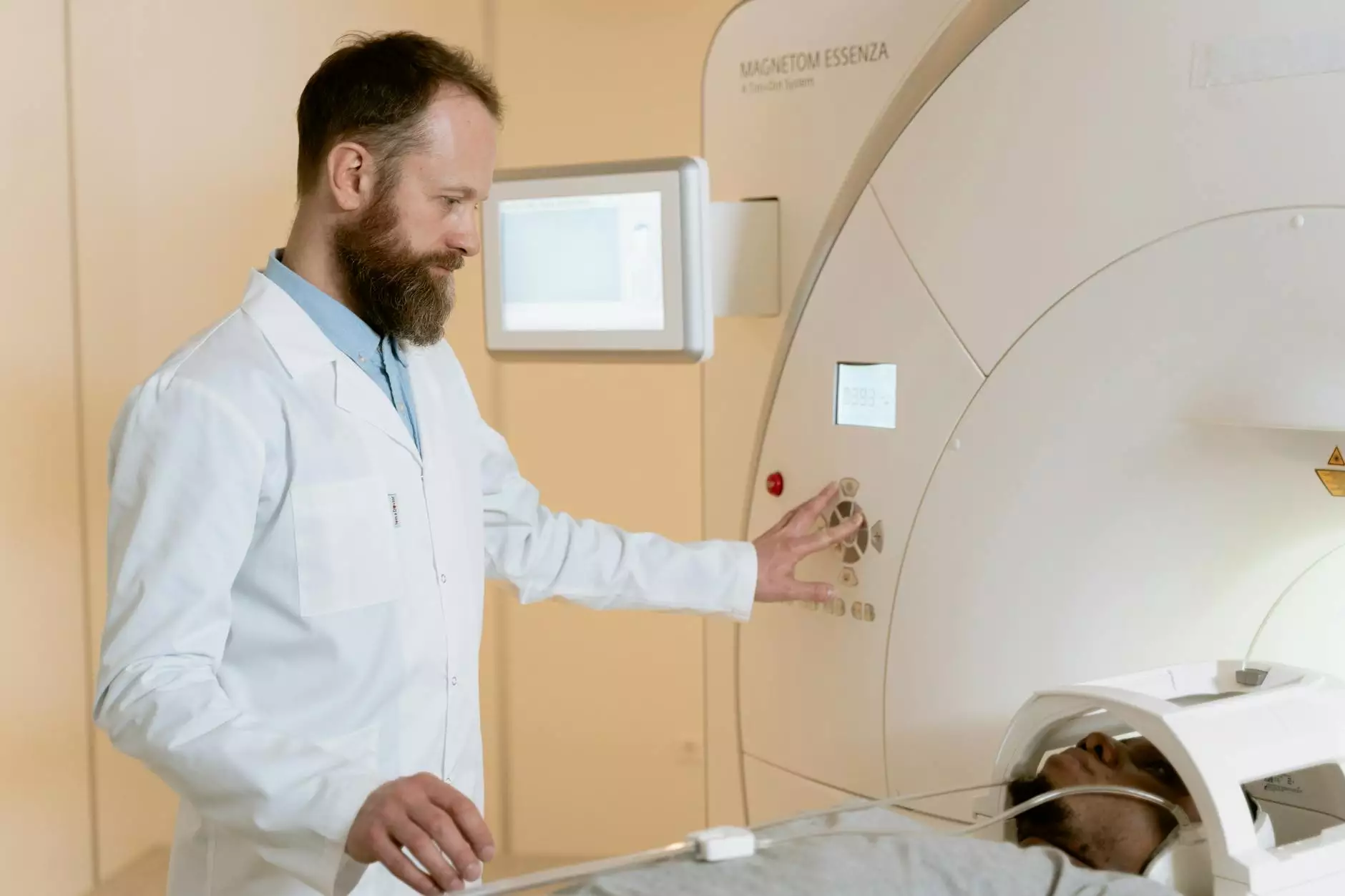Lung Cancer CT Scan: A Comprehensive Guide to Screening and Diagnosis

Lung cancer is one of the leading causes of cancer-related deaths globally. Early detection is crucial, and the lung cancer CT scan is an essential tool in this fight. In this article, we will explore the importance of CT scans in diagnosing lung cancer, the procedure involved, what to expect during the scan, and the implications of results.
Understanding Lung Cancer
Lung cancer primarily starts in the lungs and is categorized into two main types: non-small cell lung cancer (NSCLC) and small cell lung cancer (SCLC). Both types can manifest with similar symptoms, making early detection challenging.
- Non-small cell lung cancer (NSCLC) - This is the most common type and includes several subtypes such as adenocarcinoma, squamous cell carcinoma, and large cell carcinoma.
- Small cell lung cancer (SCLC) - This type grows more rapidly and is often associated with smoking.
Why Is a Lung Cancer CT Scan Important?
The lung cancer CT scan plays a vital role in the early detection of lung cancer. Unlike standard X-rays, CT scans provide a more detailed view of the lungs, helping physicians identify suspicious masses or nodules. According to research, individuals at high risk for lung cancer, such as chronic smokers, can benefit significantly from regular CT screenings.
Advantages of Lung Cancer CT Scans
- Early Detection: CT scans can identify abnormalities before they develop into cancer, which increases the survival rate.
- Detailed Imaging: CT scans provide cross-sectional images of the body, allowing for precise localization and characterization of lung lesions.
- Guidance for Treatment: The results of a CT scan can help in planning treatment options, including surgery, chemotherapy, or radiation therapy.
The Lung Cancer CT Scan Procedure
When preparing for a lung cancer CT scan, it is essential to follow specific guidelines for accurate results. Here, we outline the typical procedure:
Pre-Scan Preparations
Before the scan, patients should inform their healthcare providers about any medications, allergies, or medical conditions. Patients may be advised to avoid eating or drinking for several hours prior to the scan. It is also essential to remove any metal objects, such as jewelry or belts, as they can interfere with the imaging results.
The Scanning Process
The actual CT scan takes only a few minutes. Patients will lie on a motorized table that moves through the CT scanner. The machine will rotate around the patient, capturing detailed images of the lungs from various angles.
During the CT scan:
- Patients will be instructed to hold their breath briefly while the images are being taken to minimize movement.
- The procedure is painless, but some patients may experience a sensation of warmth due to the contrast dye, if used.
Post-Scan: What to Expect
After the lung cancer CT scan, patients can resume normal activities immediately unless instructed otherwise by their doctor. Results are typically reviewed by a radiologist and reported to the prescribing physician within a few days. Depending on the findings, further tests or follow-up imaging may be necessary.
Interpreting CT Scan Results
CT scan results can reveal several key factors:
Lung Nodules
A lung nodule is a small round gray spot on the lung that could be either benign (non-cancerous) or malignant (cancerous). Most nodules are benign, but follow-up scans may be recommended to monitor any changes in size or appearance.
Masses and Tumors
If a mass larger than 3 centimeters is detected, further evaluation is typically recommended. These masses require additional diagnostic tests, such as biopsies, to determine if cancer is present.
Staging of Lung Cancer
If lung cancer is diagnosed, staging will determine how advanced the disease is, which is critical for prognosis and treatment decisions. The stages range from stage 0 (cancer in situ) to stage IV (advanced cancer that has spread to other tissues).
Risk Factors for Lung Cancer
Understanding the risk factors for lung cancer can help in taking preventive measures. Some of the primary risk factors include:
- Smoking: The most significant risk factor, responsible for the majority of lung cancer cases.
- Secondhand Smoke: Exposure to secondhand smoke also increases the risk of developing lung cancer.
- Environmental Factors: Exposure to radon gas, asbestos, and other harmful substances.
- Family History: A family history of lung cancer increases an individual's risk.
- Age: The risk increases with age, particularly for those over 65.
Preventive Measures
While some risk factors cannot be controlled, several strategies can reduce the likelihood of developing lung cancer. Important preventive measures include:
- Quitting Smoking: For smokers, quitting can significantly lower the risk of lung cancer.
- Avoiding Secondhand Smoke: Steering clear of environments where smoking occurs can help protect non-smokers.
- Regular Screenings: High-risk individuals should discuss with their healthcare providers whether annual CT scans are appropriate.
- Nutritional Choices: A balanced diet rich in fruits and vegetables may help in reducing cancer risk.
Treatment Options for Lung Cancer
If diagnosed with lung cancer, treatment options will vary based on the type, stage, and overall health of the patient. Common approaches include:
- Surgery: For localized lung cancer, surgical removal of the tumor may be an option.
- Radiation Therapy: This is often used to kill cancer cells and shrink tumors.
- Chemotherapy: Systemic treatment that uses drugs to kill or slow the growth of cancer cells.
- Targeted Therapy: Newer treatments that target specific abnormalities in cancer cells.
- Immunotherapy: This helps to stimulate the body’s immune system to fight cancer.
Conclusion
The lung cancer CT scan is a critical tool for early detection and successful management of lung cancer. Understanding the importance of this diagnostic procedure can empower individuals to take action towards their lung health. If you are at high risk or experiencing symptoms, seek medical advice promptly. Remember, early detection is key to improving outcomes in lung cancer treatment.
For more information and support regarding lung cancer screening and treatment, visit HelloPhysio.sg.









